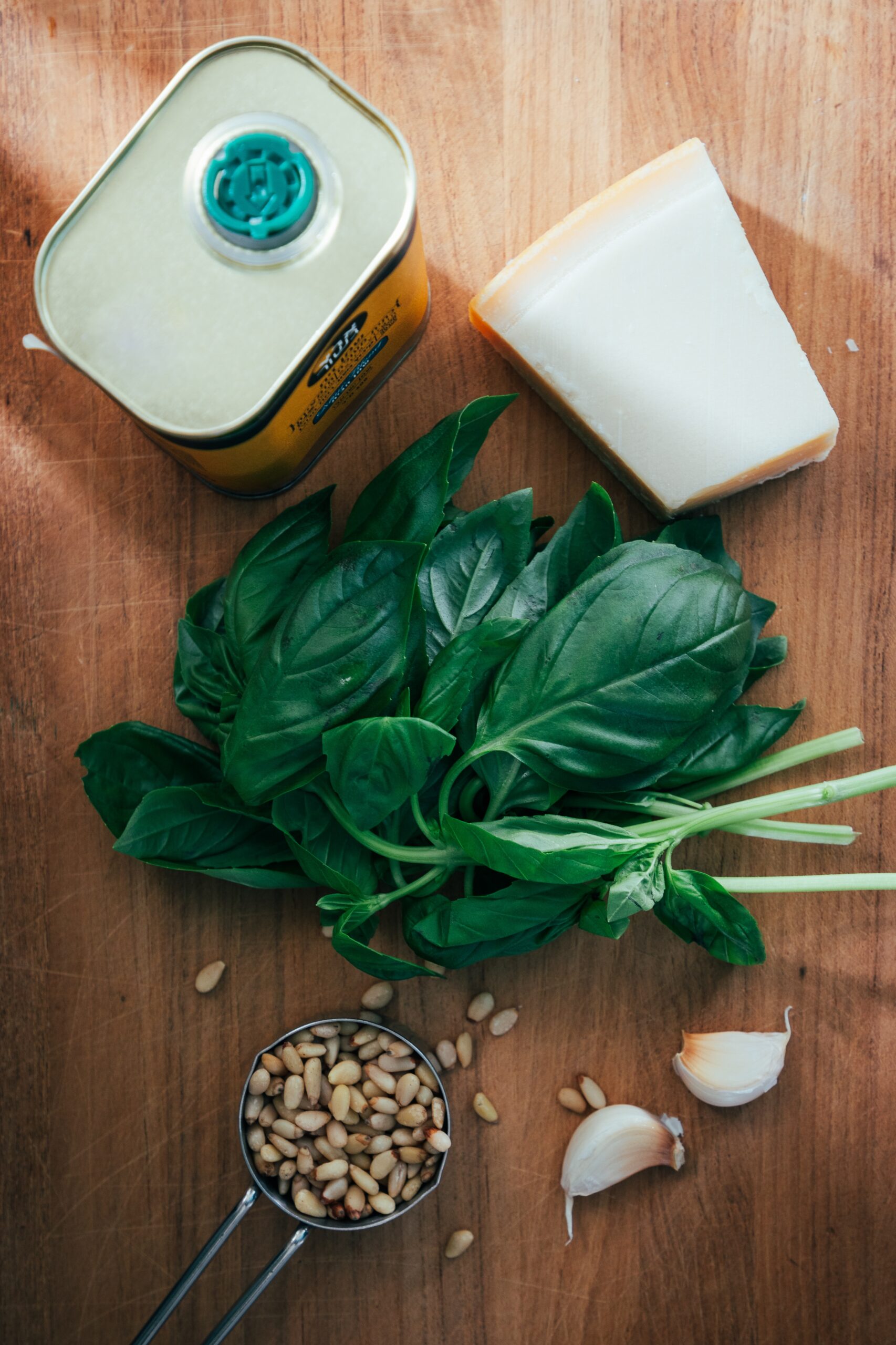Crafting the Perfect Homemade Pesto
Imagine a burst of herbaceous and full-bodied flavors dancing on your taste buds, elevating even the simplest of dishes. That’s the magic of homemade pesto! As a seasoned chef specializing in healthy cooking, I’m thrilled to guide you through the art of creating a luscious homemade pesto. This vibrant green condiment is not only a flavor powerhouse but also a versatile companion to a myriad of dishes. Let’s embark on this culinary journey and uncover the secrets to mastering the art of homemade pesto.
Ingredients:
- 2 cups fresh basil leaves, packed
- 1/2 cup freshly grated Parmesan cheese
- 1/2 cup extra virgin olive oil
- 1/3 cup pine nuts, lightly toasted
- 3 garlic cloves
- Salt and freshly ground black pepper, to taste
The Pesto Technique: Unveiling the Essence
The technique of making pesto is an age-old method originating from the Liguria region of Italy. It’s all about the harmonious blend of the key ingredients: fresh basil leaves, Parmesan cheese, pine nuts, garlic, olive oil, and seasoning. The pesto technique involves emulsifying these elements into a smooth, rich sauce, enhancing their individual flavors while creating a glorious amalgamation of taste.
Importance of Technique:
The technique behind making pesto is crucial because it preserves the integrity of each ingredient. Properly blending the basil leaves, cheese, pine nuts, and garlic ensures an even distribution of flavors. The olive oil acts as a binding agent, uniting the ingredients into a smooth, cohesive texture. Mastering this technique allows you to create a pesto that’s not only delicious but also showcases the essence of each component.
Step-by-Step Pesto Perfection:
Step 1: Selecting Fresh Basil Leaves (10 minutes)
Begin by choosing the freshest basil leaves you can find. Opt for bright green leaves that are free of discoloration or wilting. This is essential as fresh basil forms the heart and soul of pesto, lending its unique, aromatic flavor.
Step 2: Toasting Pine Nuts (5 minutes)
Toast the pine nuts in a dry skillet over medium heat. Stir them frequently until they turn a light golden brown. Toasting intensifies their flavor and adds a delightful crunch to the pesto.
Step 3: Prepping the Basil and Garlic (10 minutes)
Gently wash the basil leaves and pat them dry with a clean kitchen towel. Peel the garlic cloves. This step ensures that the flavors are clean and unadulterated, ready to shine in the pesto.
Step 4: Blending the Ingredients (5 minutes)
Place the basil leaves, toasted pine nuts, garlic cloves, and grated Parmesan cheese into a food processor. Pulse the mixture a few times to break down the larger pieces.
Step 5: Drizzling Olive Oil (2 minutes)
With the food processor running, gradually drizzle in the extra virgin olive oil. The steady addition of olive oil is essential for achieving the perfect emulsification, resulting in a creamy and well-combined texture.
Step 6: Seasoning to Perfection (2 minutes)
Add salt and freshly ground black pepper to taste. Blend the mixture once more until you reach the desired consistency. Taste and adjust the seasoning as needed, ensuring a well-balanced flavor profile.
Step 7: Serve and Store (1 minute)
Transfer the freshly made pesto to a clean jar or container. Use it immediately as a delightful accompaniment to pasta, a spread for sandwiches, or a dip for crackers. Store any leftover pesto in the refrigerator for up to a week, or freeze it for future use.
Tips for Pesto Mastery:
- Quality Matters: Always opt for the highest quality ingredients, especially the olive oil, Parmesan, and pine nuts. Their superior quality will shine through in the final product.
- Balance the Flavors: Adjust the proportions of ingredients to suit your taste. If you prefer a more garlicky pesto, add an extra clove. Experiment and find the perfect balance for your palate.
- Variations and Experimentation: Feel free to experiment with different herbs like parsley, cilantro, or a mix of greens to create unique pesto flavors. You can also replace pine nuts with walnuts or almonds for a different twist.
- Avoid Over-blending: Be cautious not to over-blend the pesto, as it can result in a paste-like consistency rather than the desired slightly chunky, textured pesto.
- Storage Techniques: To preserve the vibrant green color of the pesto, press a layer of plastic wrap directly onto its surface before sealing the container. This minimizes exposure to air and helps maintain its freshness.
In Conclusion: A Basil-icious Journey
Homemade pesto is a celebration of flavors, a culinary journey that delights the senses. The technique involved in crafting the perfect pesto is an art that every home cook can master. Experiment, savor, and embrace the endless possibilities this lush, green sauce offers. Here’s to elevating your dishes with the magic of homemade pesto—pure, vibrant, and oh-so-delicious!





